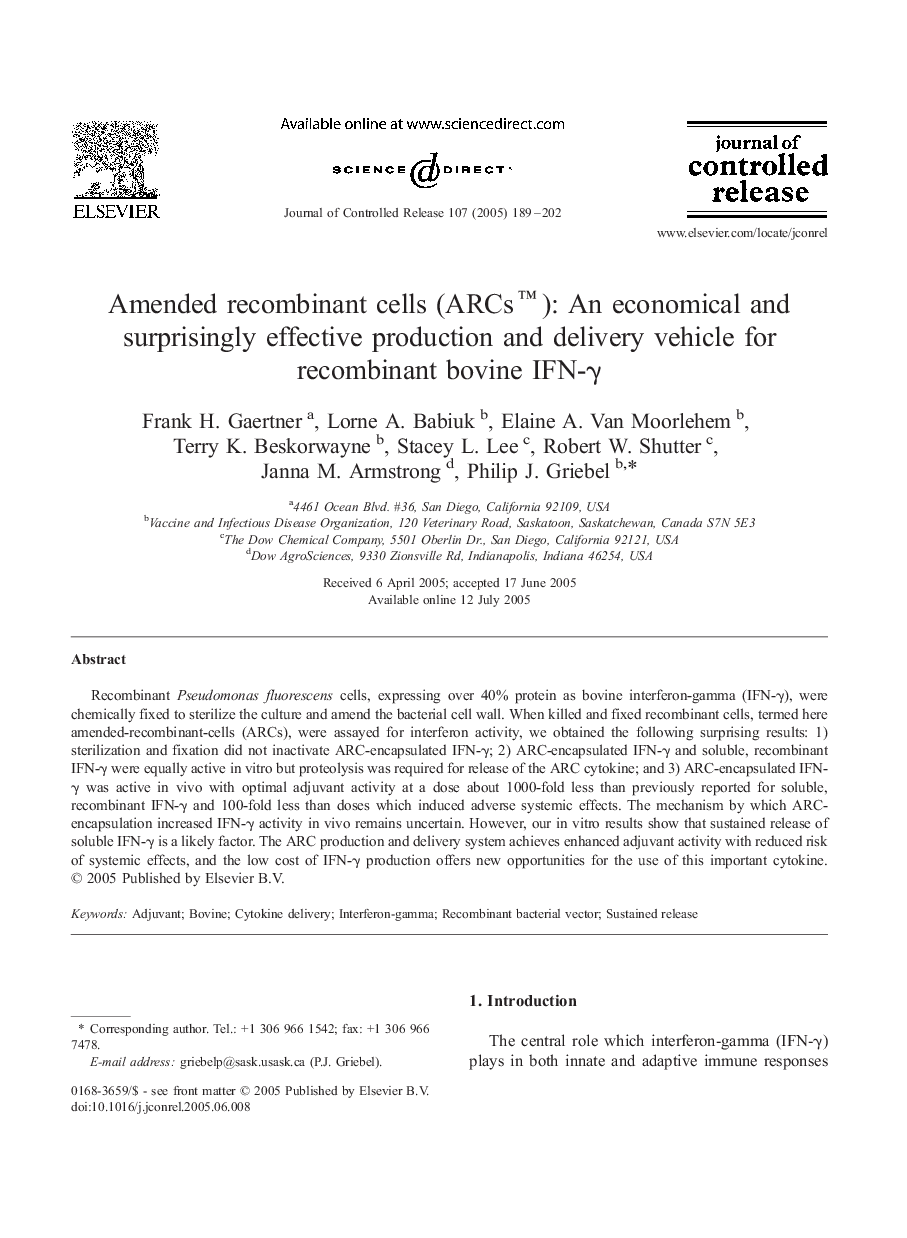| Article ID | Journal | Published Year | Pages | File Type |
|---|---|---|---|---|
| 10613469 | Journal of Controlled Release | 2005 | 14 Pages |
Abstract
Recombinant Pseudomonas fluorescens cells, expressing over 40% protein as bovine interferon-gamma (IFN-γ), were chemically fixed to sterilize the culture and amend the bacterial cell wall. When killed and fixed recombinant cells, termed here amended-recombinant-cells (ARCs), were assayed for interferon activity, we obtained the following surprising results: 1) sterilization and fixation did not inactivate ARC-encapsulated IFN-γ; 2) ARC-encapsulated IFN-γ and soluble, recombinant IFN-γ were equally active in vitro but proteolysis was required for release of the ARC cytokine; and 3) ARC-encapsulated IFN-γ was active in vivo with optimal adjuvant activity at a dose about 1000-fold less than previously reported for soluble, recombinant IFN-γ and 100-fold less than doses which induced adverse systemic effects. The mechanism by which ARC-encapsulation increased IFN-γ activity in vivo remains uncertain. However, our in vitro results show that sustained release of soluble IFN-γ is a likely factor. The ARC production and delivery system achieves enhanced adjuvant activity with reduced risk of systemic effects, and the low cost of IFN-γ production offers new opportunities for the use of this important cytokine.
Related Topics
Physical Sciences and Engineering
Materials Science
Biomaterials
Authors
Frank H. Gaertner, Lorne A. Babiuk, Elaine A. Van Moorlehem, Terry K. Beskorwayne, Stacey L. Lee, Robert W. Shutter, Janna M. Armstrong, Philip J. Griebel,
